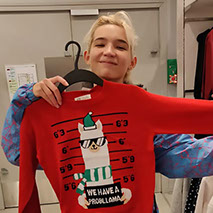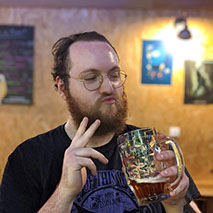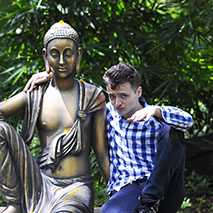
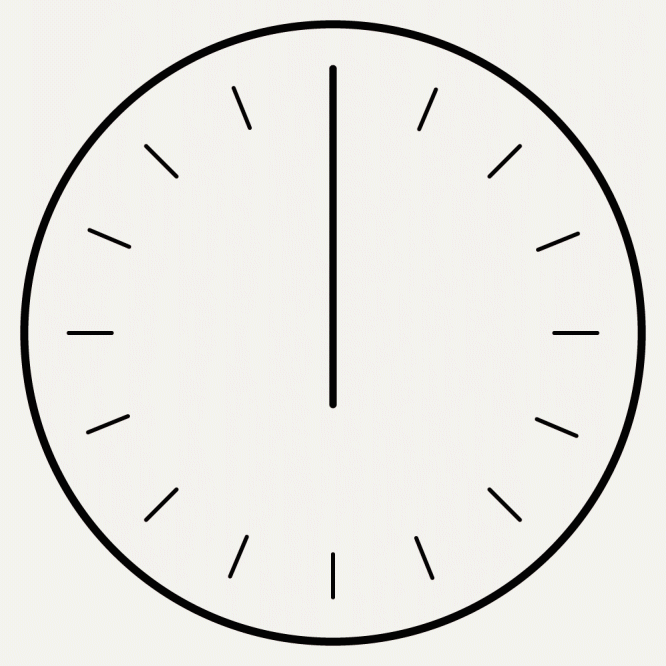
3 months
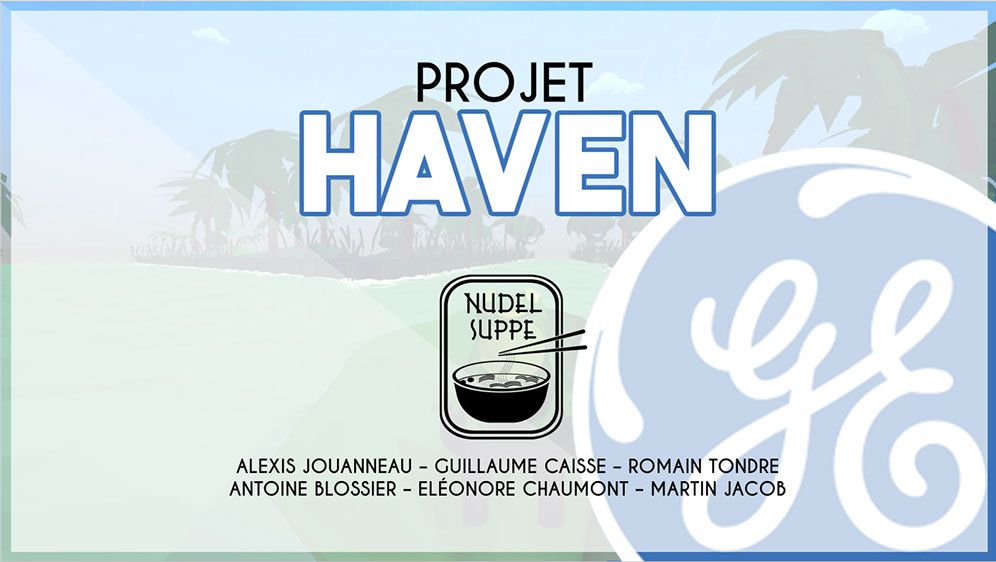
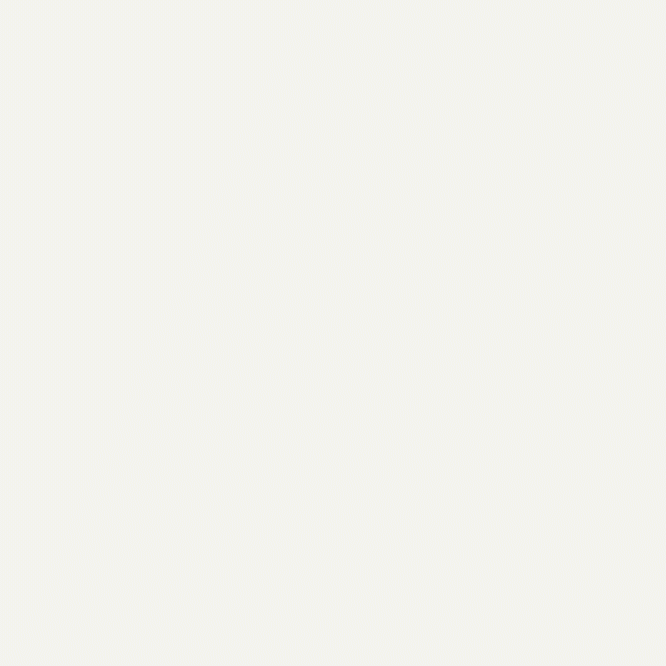
6 people
Context
When we were in 3rd year, Rubika held "Transversal projects", a 3-month project with industrials, where all the different schools were mixed, making teams composed of Game Designers & Artists, 3D movie artists and designers. Our brief was proposed by General Electrics Healthcare:
The team
The team we had for this project was probably the most bizarre and yet skilled I've had the chance to work with. We branded ourselves as Nudelsuppe, and every team working around us could tell you the ambiance was awesome. But let's meet these characters !
Antoine Blossier
Supinfocom
Antoine was really the one lifting the spirit of the team. He would come in early to print posters with jokes or memes written on them and put them on the door. He was in charge of the environment alongside Guillaume.
Eleonore Chaumont
Supinfocom
Eleonore's nickname is Coca, and that's how everybody calls her.
The only small girl in a group of men, that didn't stop her from being the boldest of our group.
Coca was the best 2D artist of our group, and would take in charge chara design and scenarios
Guillaume Caisse
Supinfogame - Artist
Guillaume is a 1m95 very strong guy. Very impressive physically, he surprisingly was the least loud one of us (except when we were at the bar). Guillaume had a more holistic approach of the Artistic Direction and would make the environment with Antoine.
Martin Jacob
Supinfogame - Designer
Martin wasn't supposed to work with us at first, but he asked me to join our team because "I don't want to have to manage anything and I want to know what it's like to work with Romain". Very talented Game Designer and programmer, he was the one in charge of the Unity prototype we made.
Romain Tondre
ISD - Transportation
Romain is the main reason I was excited to start the project. His workflow is... let's say "Comtemplative". I especially remember a whole afternoon we spent arguing about what sense is the horizon when you're lying horizontally.
Joke aside, Romain has a sense for details that I find impressive and was in charge of the headset & seat design.
My role
The combination of all those strong personalities was a pleasure to manage and work with. Romain and Martin had something going on, with Martin always pushing us forward while Romain would question everything we've done 3 days before the last deadline.
Trying to help them find compromises and understand each other was my main role during design sessions and brainstorms.
On the artists side of ends, they were less used to the research and brainstorm phases, and I had to make sure they were following and listened to. But once we got on production they managed themselves and I could focus on the design with Romain and Martin.
My role mainly consisted of putting on deadlines, resolving conflicts on the design and between people in the group, documenting our work and maintaining communication between the different poles of the team and designing both the physical and virtual parts of the experience, and connecting them.
Analysis
First things first
The first thing we did was to question the brief. Is VR really a good idea ? If so why and how ? What about our target, we're not talking to teenagers used to playing games, we're targeting middle-aged to old people, mostly women. Are they okay with the concept of virtual reality ? Has there been studies or examples of other medical fields where VR is used ?
VR in medical care
We discovered that VR is already used quite a lot, but mostly with children in the hospital environment. For adults, the most common use cases are fear-removing and physical therapy. VR seems to work, there actually are scientific papers about that showing results that indicate that VR allows to relieve pain amongst patients, but immersion is a very important factor. The more the patient is immerged in the VR setup, the most efficient it is.
The operation itself
Now that we knew VR could be effective, we tried to find as much information about mammal biopsy as we could. None of us knew the topic, so we had to get up to speed. I won't go over everything, but here are keypoints that are going to be very useful later for understanding our project:
- The operation can lead to cancer discovery, thus being very stressful
- The patients are passive, they get undressed and go on the operation later
- The patients have to lay on their side, one of their boob on a medical support
- The doctor takes a little bit of skin and then analyses it
- The length of the operation can very from 15 minutes when everything's smooth, up to an hour in certain cases
- At some points in the operation, the doctor has to talk to the patient
The patient's point of view
We also had to understand what people feel when they go through the operation, so we could know how they felt at which moment. The most recurring point was the passivity of the patient. It's something that they seemed to hate, like they had no control over the situation and the feeling of being just a piece of meat in a butcher's shop.
This is why we decided to focus our experience on choice, because it's a scientific fact that the feeling of control is one of the best ways to reduce stress amongst humans, and that's a huge painpoint of the actual experience of the users.
Something that also stood out was the feeling of loneliness. Apart a few times, the doctors and nurses are talking between them, cutting the patient from them. We wanted our experience to make them feel less alone, introducing a companion of some sort that would guide them through the operation.
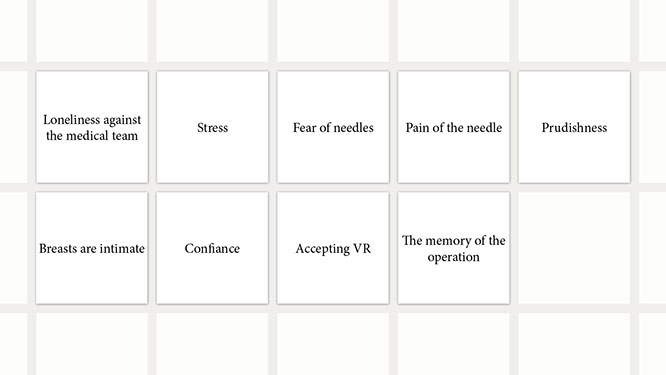
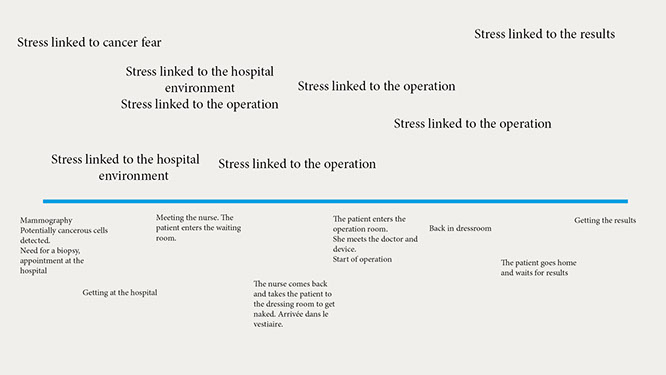
Painpoints of the patient during the operation
The different stress in the user's journey
The headset
The last thing we noticed was that in the patient's mind, VR headset can't be used in a medical context. That's also something we'll have to adress because no matter how good our experience is, if the patients refuse to wear the headset then there's no point to our solution.
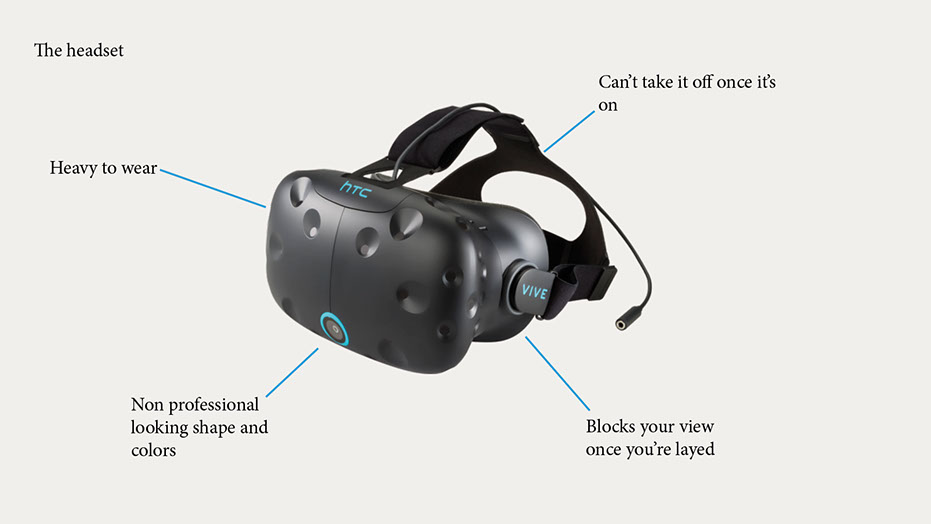
Rebrief
Axis
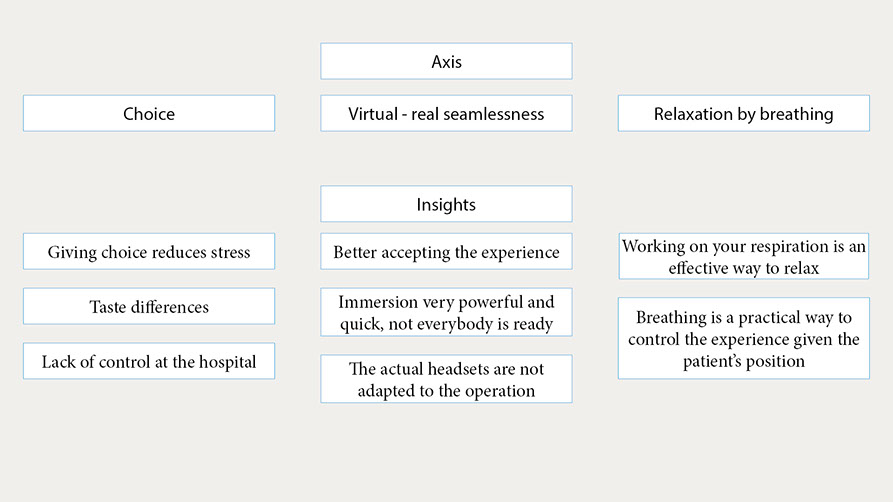
Our first definition of the experience included bringing the notion of choice to the patient, redesigning the VR experience for it to better fit the medical environment and to base the gameplay around breathing; which was an easy and inclusive way to control the game for everyone.
The experience
We ended up making a unity prototype for the experience that's going to be inside the headset.
You travel on a leaf, following the frog's breathing to make it move. A device measures the patient's breathing, the more you follow the frog's breathing, the smoother the ride will be.
Around every 30 seconds, you reach a crossing, the patient can use the stress ball to control where the boat should go. The choices the patient makes modifies the environment, changing things such as the fruits, type of trees or weather.
The low poly environment makes is used to allow room for imagination, and because it's a style that is liked amongst all ages. It's also a technical limitation, since we want the game to run on a smartphone.
The headset
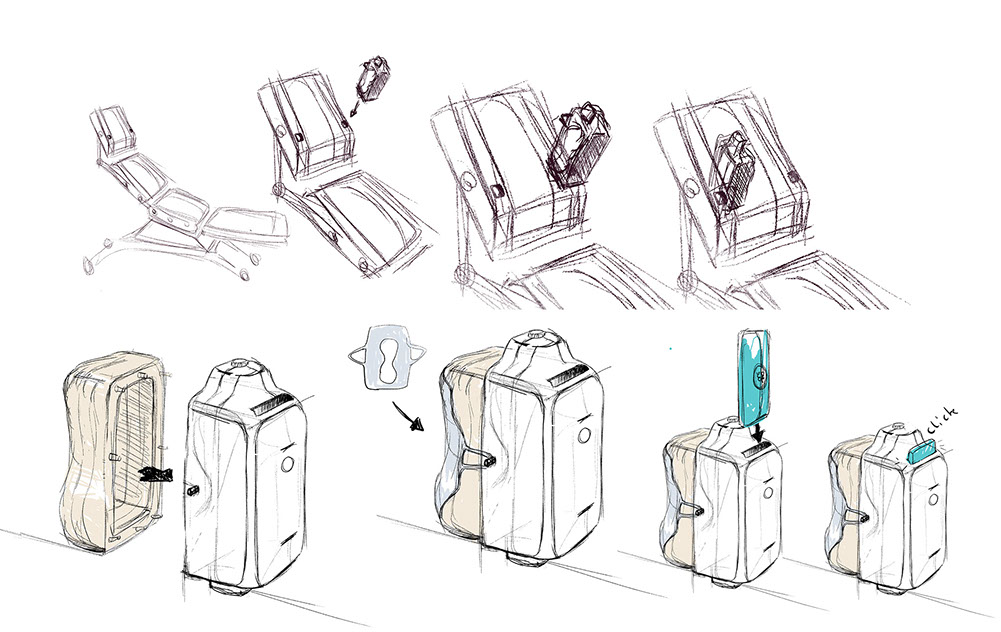
Sketches by Romain Tondre
The headset has been designed to plug in the seat where the patient will be.
It's not fixed on their head to allow them to turn at any moment their eyes from the experience, if at any point they want to leave the experience they can do so.
We added a protective layer that will be changed with each patient for sanitary reasons.
The application is launched from a smartphone plugged in the headseat, avoiding the need to plug it to a computer.
The sound comes from the seat, allowing the doctors and nurses to talk to the patient without having to take them out of the experience.
Scenario
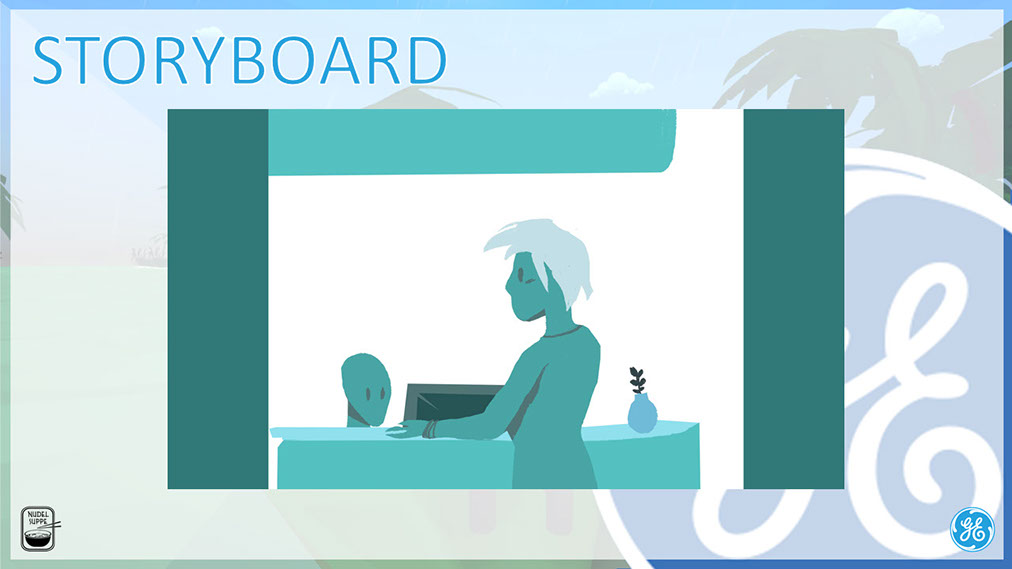

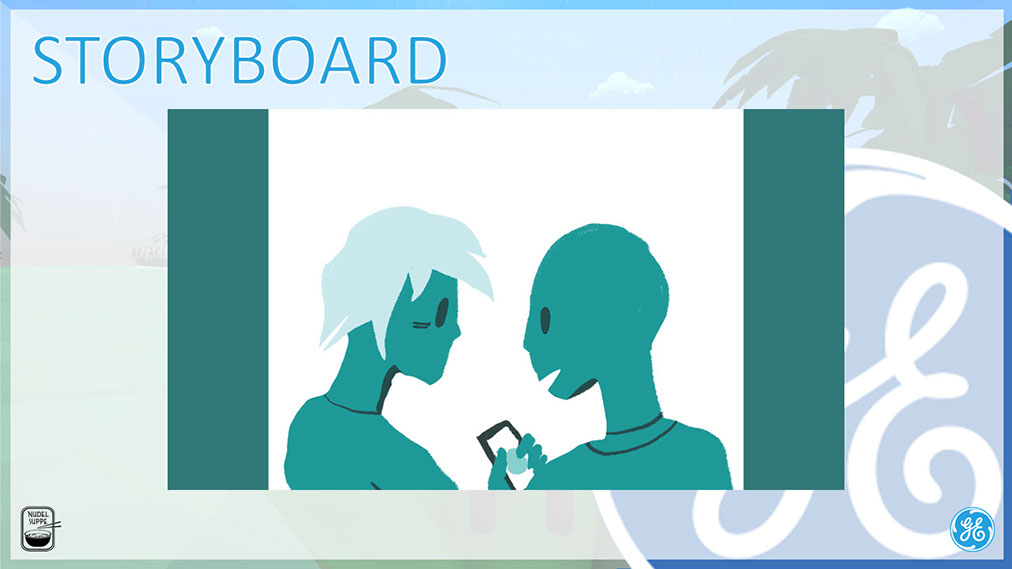


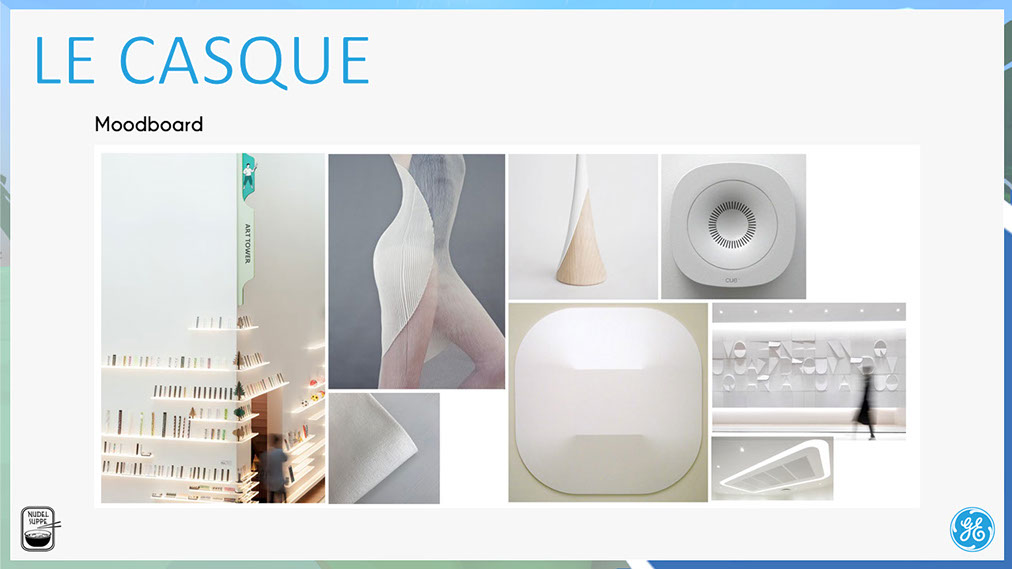
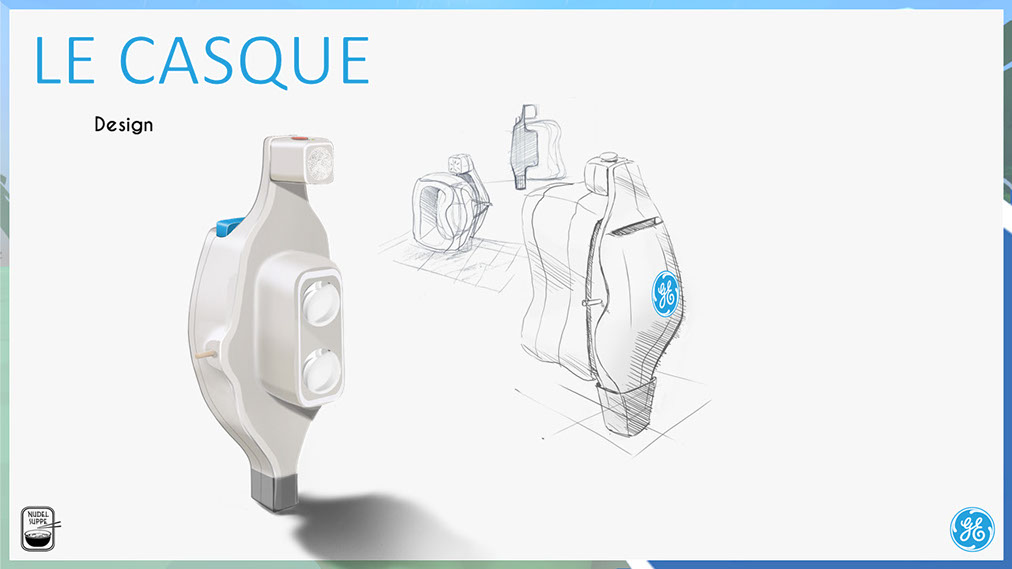

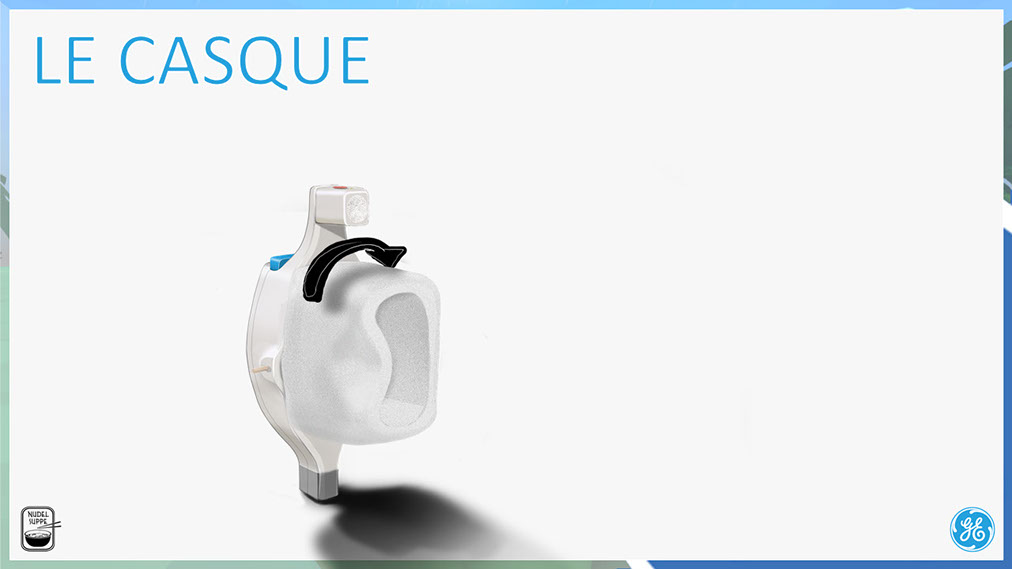
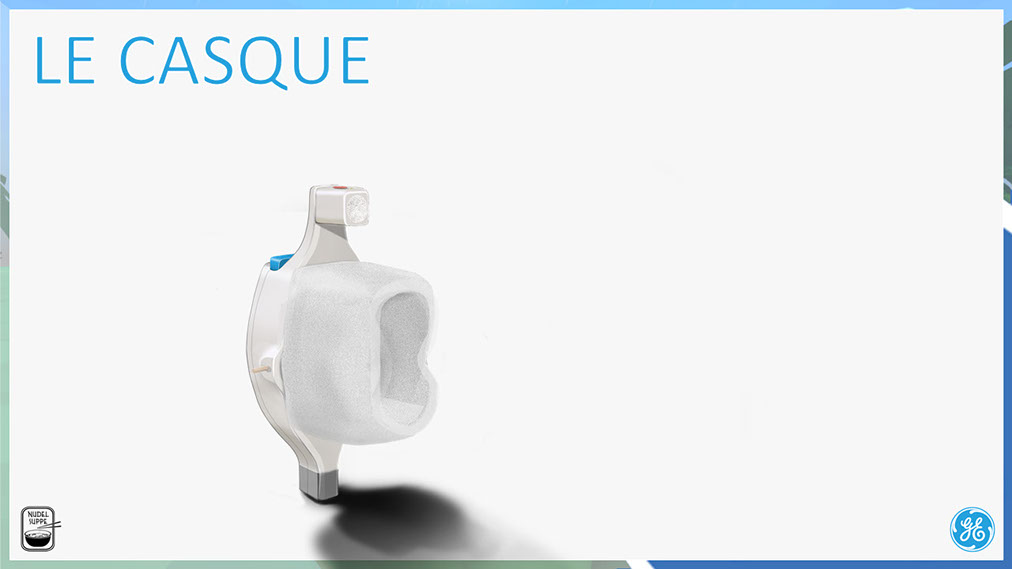

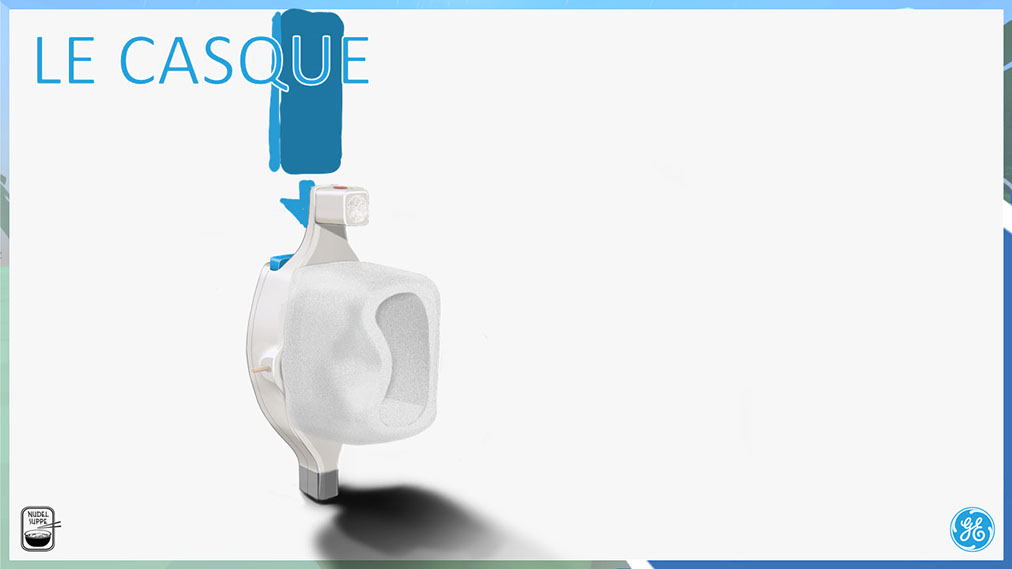
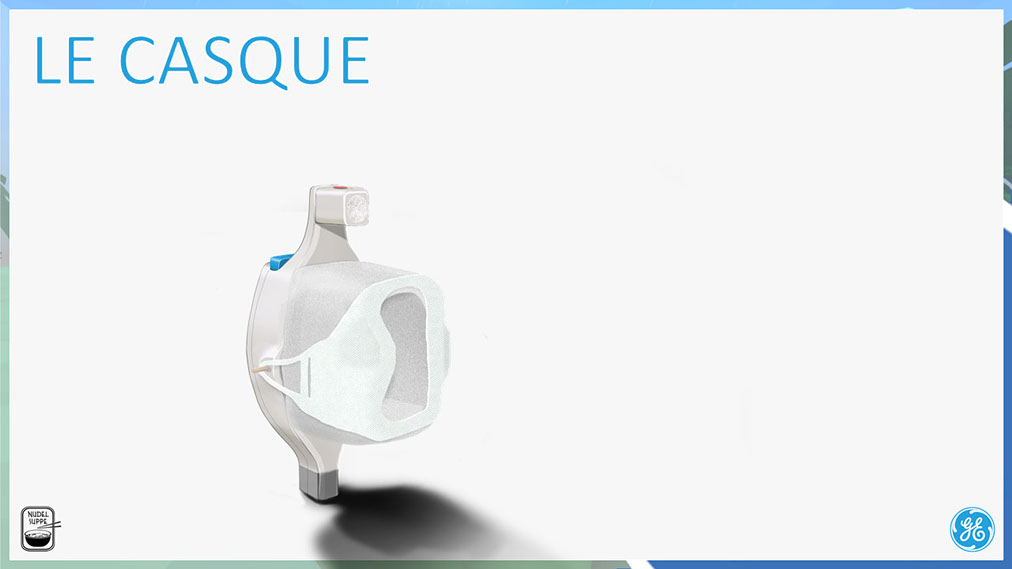
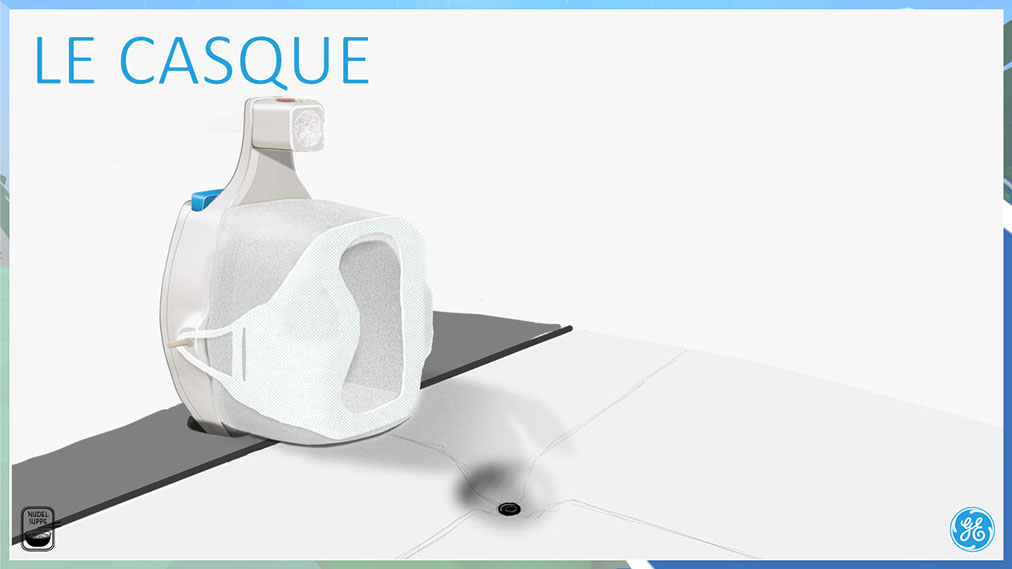

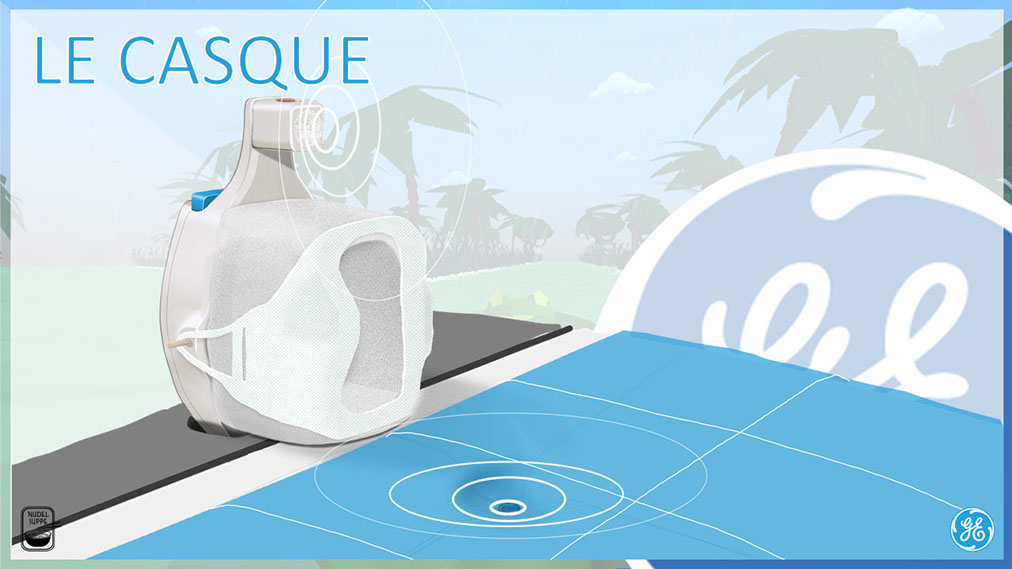

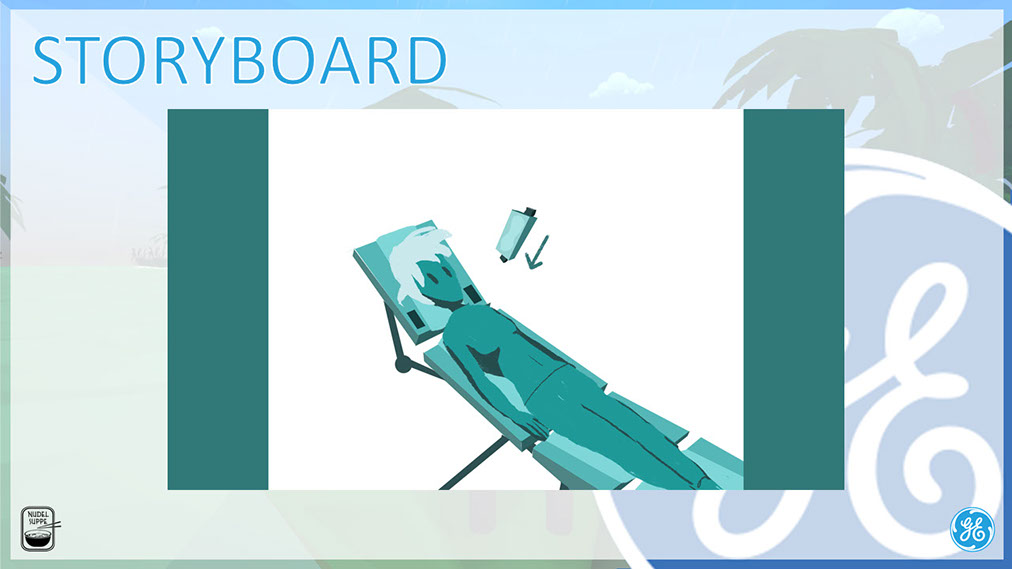


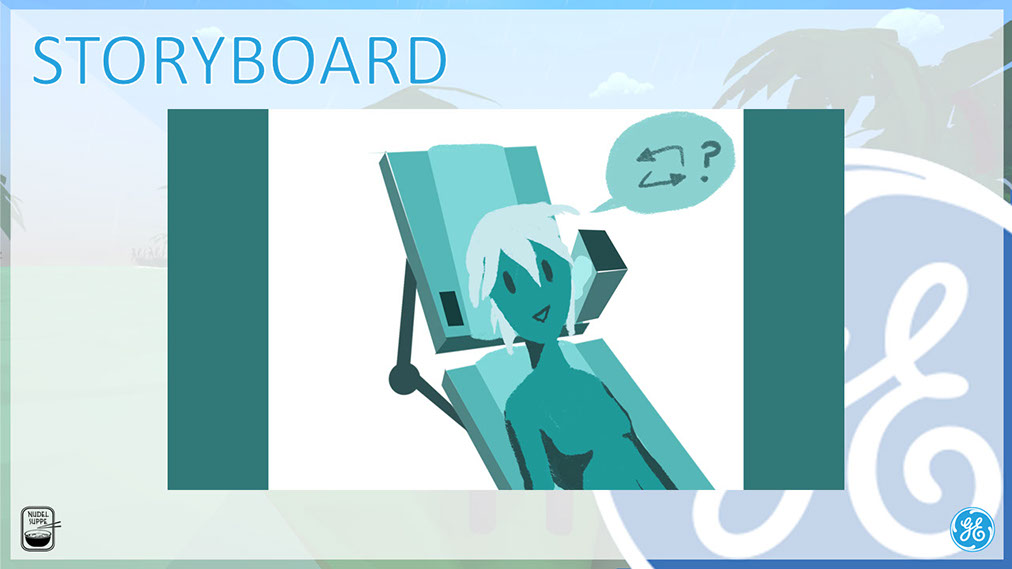
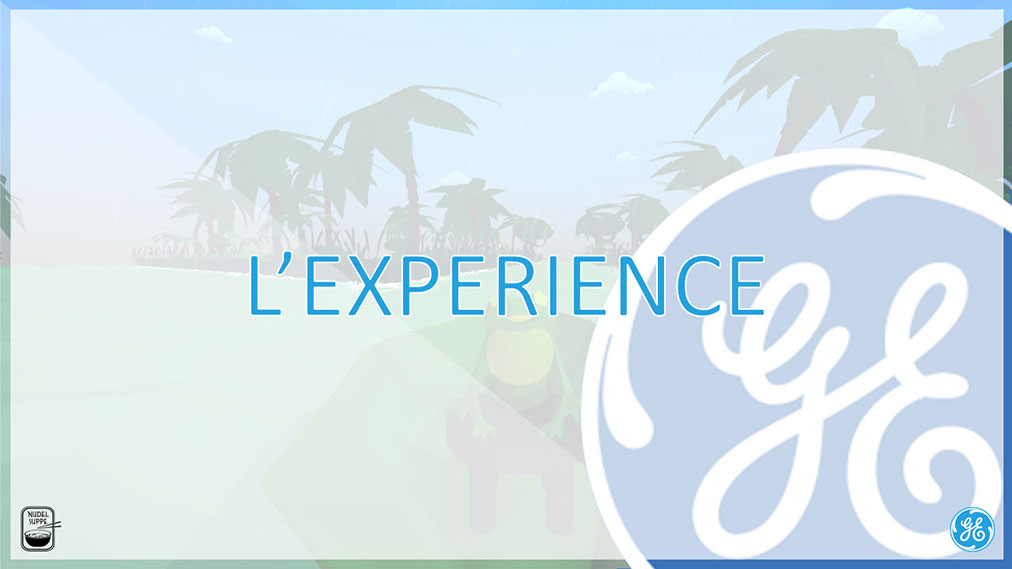
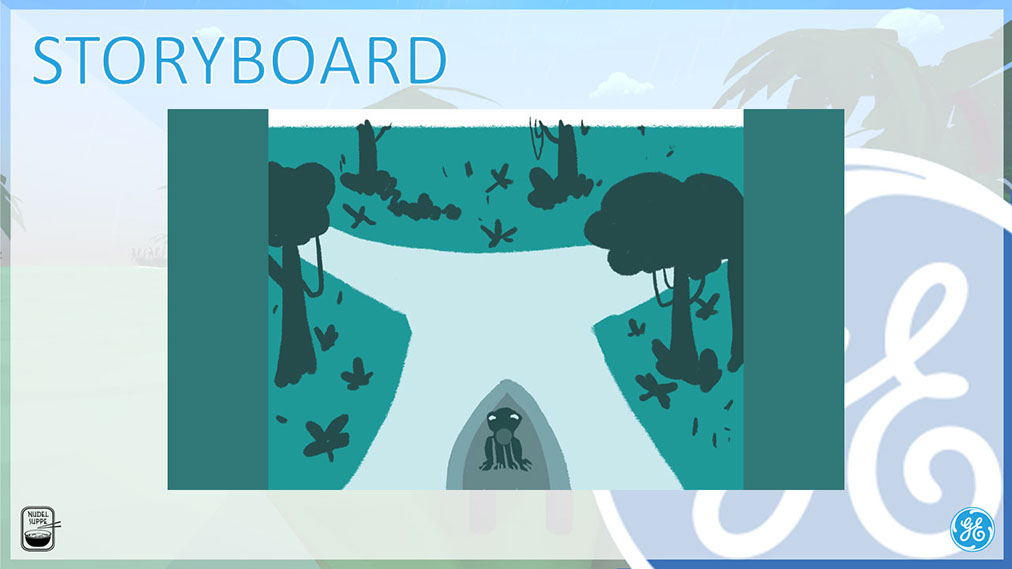
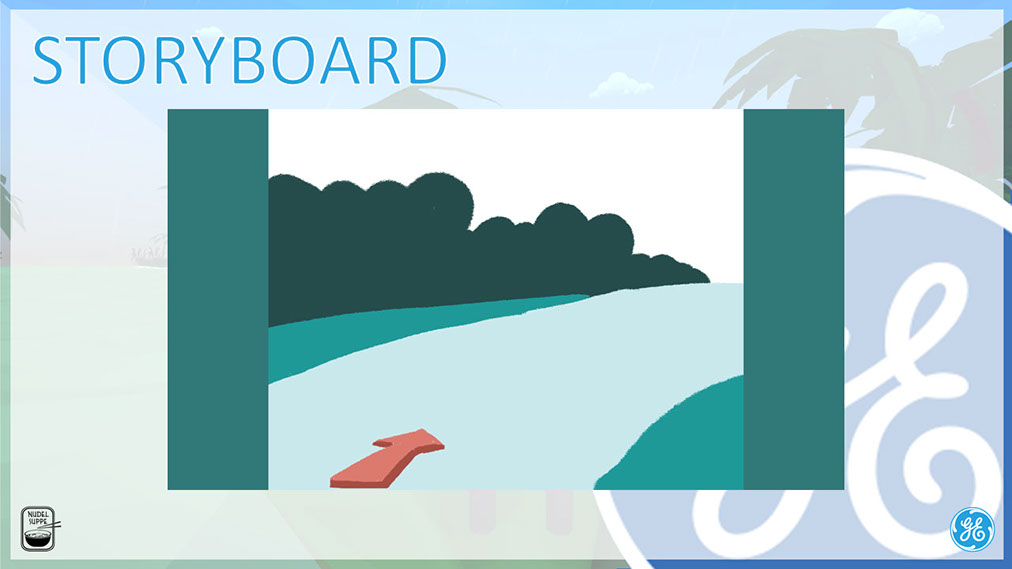
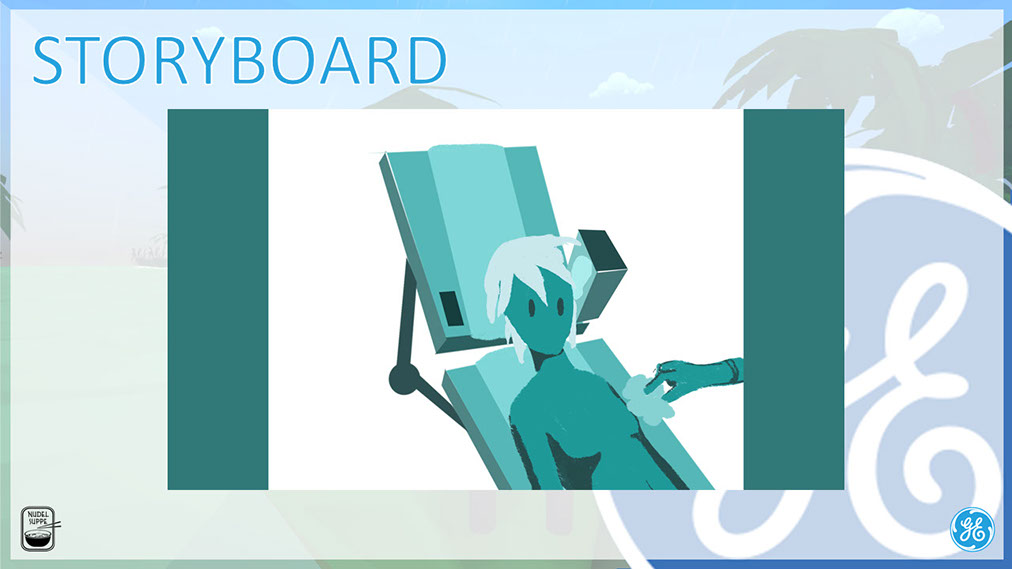
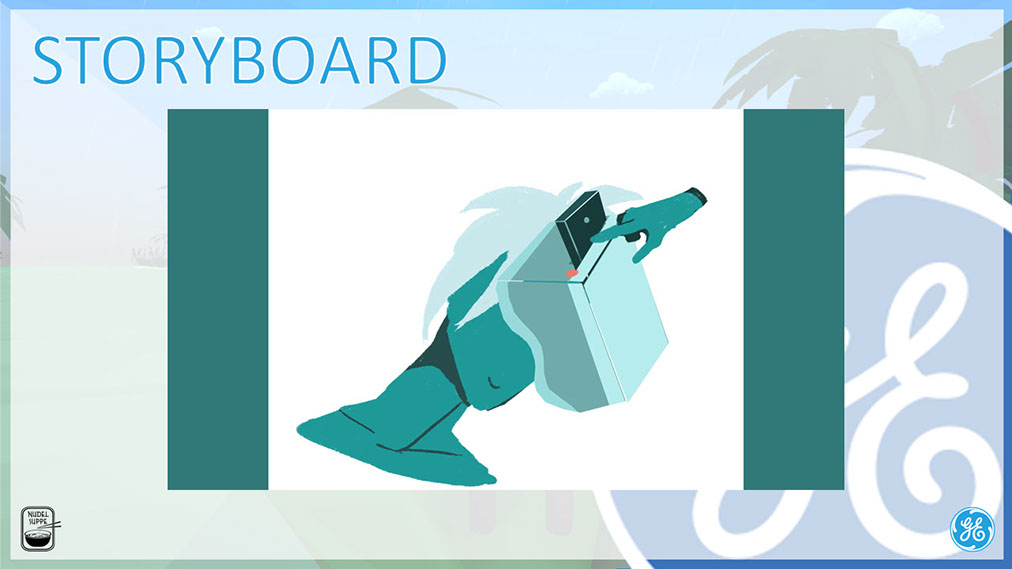


The patient arrives at the hospital
She gets informed about the experience
She starts filling out a form to create the basic environment she'll discover
She undresses
She gets in the operation room
The headset has been rethought to fit in the chair, and to have a more "hospital friendly" look
The headset has a protective layer
And you can turn it
So it can be put in any sense
You plug in the phone with the parameters set by the patient
Add another layer for sanitary purposes
And plug it in the seat
The sound comes from the inside of the seat and the headset for stereo sound
The patient can immerge herself in the experience
The patient sits
Headset is on
Phone in,
The medical staff makes sure everything's good and the headset is working
She asks to change the environment she was put in
She is in a forest, following the frog's breath pattern
She chooses the direction thanks to the stress ball in her hand
The doctors prepare the operation, she can take a look at what is happening
5 minutes before the end of the experience, the doctors press a button on the headset
This triggers the end, where the boat will land in the environment the patient shaped
First do not harm - this was our philosophy for designing the experience. Patients shouldn't be forced in something they don't want, and should be able to change their mind at any given moment.
- The experience is non-intrusive
- The experience doesn't require any skills
- The experience gives control to the patient, both in the physical and digital world
- Test it in condition
- Give more control to the patient
- Create more environments to cover a larger taste disparity
For me
Given I had already tried to manage a team the year before, this project came right on time for me to test my skills.
At first it was hard to work with such strong personalities, everyone knew what they wanted to do and I had to adapt the methodology to make everyone feel involved in the design process.
But it was a great experience, because I learnt so much about design and 3D thanks to my teammates, and in the long run we were able to make everyone work on the stuff they like.
This is the project where I realized that when I'm surrounded by such strong individuals, I can still make everyone find a common ground and work together. I loved this experience and would love to work with such a team any time in the future.
For the team
For a design brief, we had only one official designer. This meant we had all to learn how to make a design analysis on the go.
That was the hardest, in Game and Animation we are used to rush to the creativity phase, so Romain and me had to be behind everyone's back, showing how to find good resources and insights.
Other than that, the project went smoothly, as everyone had the "expert" hat in a field or another, and were in charge of taking decisions (which meant convincing the rest of the team); and who knows, maybe a Nudelsuppe design studio might work ?
Anyways it was a great experience for everyone, we enjoyed working together and are proud of the result which in the end, might be the only thing that matters for a student project.
Thank you
For reading until there, if you're interested I'd be glad to connect with you !
Contact me

